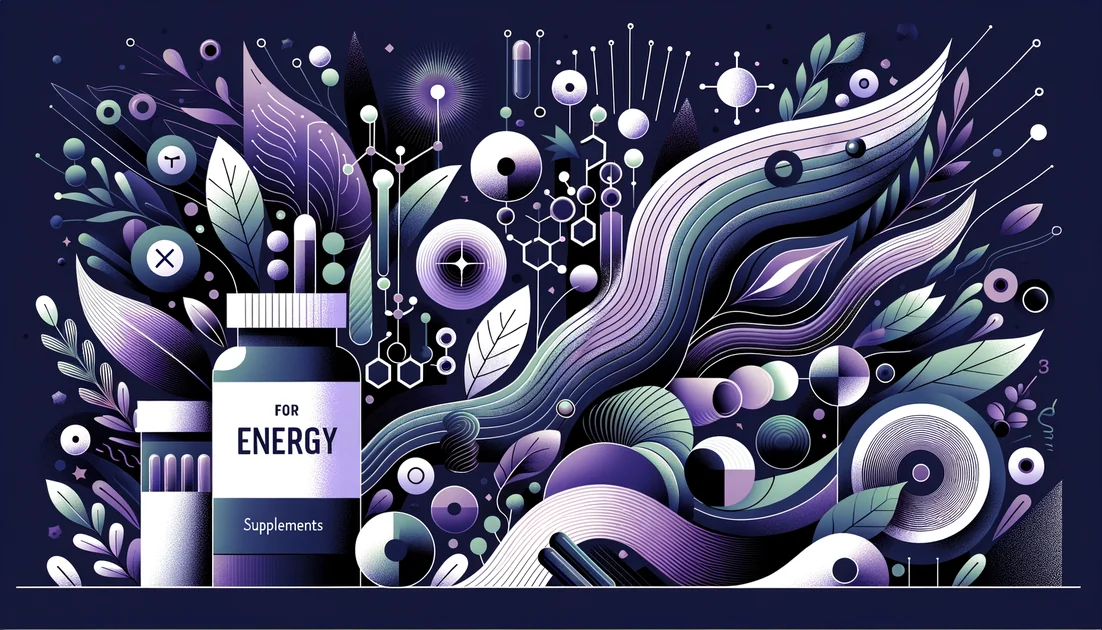
CoQ10 + Fish Oil
Heart Energy Amplified: Cellular Power Duo
- •Heart and vascular support by pairing mitochondrial energy/antioxidant support (CoQ10) with lipid/inflammation support (EPA/DHA from fish oil)
- •Possible absorption help for CoQ10 when taken with fats.
Quick Summary
The Verdict
Theoretical Stack- •Solid reasons to pair them and some convenience (take together with a fatty meal), but human data so far show additive benefits—not proven synergy. Use this combo if you want both lipid/inflammation support and mitochondrial support in one routine
- •Don't expect the pair to outperform each ingredient's known strengths. [1][2][3][11]
Essential Core: CoQ10, Fish Oil
Beneficial Additions: Selenium (older adults with low selenium status) [^15]
Optional Additions: Magnesium
The Synergy Hypothesis
CoQ10 energizes and protects heart and vessel cells, while fish oil reduces inflammatory 'noise' and improves lipids; taking them together may create a smoother, lower-stress environment where mitochondria work better. Fat from fish oil may also help CoQ10 get absorbed. [1][2][3][8]
How the system works →
Think of your cardiovascular system like a city grid. CoQ10 is the crew tuning up power plants so lights stay on without sparks; EPA/DHA are the firefighters who quiet chronic smoldering and keep traffic moving by easing vessel tension and improving the 'fuel mix' (triglycerides). If you swallow CoQ10 with fats—like fish oil—you give it a better ride through the gut. The result is a tidy city with steadier power and fewer alarm bells, but current human trials don't show that the duo beats either one alone on key outcomes like blood pressure. [1][2][3][11]
Solo vs Combination
Solo fish oil is often enough if your target is triglycerides or modest BP/HR changes. Solo CoQ10 is better for mitochondrial/energy or endothelial support. Together, you cover both lanes at once and may improve CoQ10 uptake by taking it with fats—but current human data do not show that the pair beats each alone on key cardiovascular outcomes like BP/HR. [1][2][3]
The Ingredients
CoQ10 +
primary active• essential
The cell's spark plug: ferries electrons in mitochondria to make ATP and doubles as a fat-soluble antioxidant that protects lipids and blood vessels. [5][6]
Works Alone?
Yes
Needs combination
In This Combo
100–200 mg/day with the same meal as fish oil
(dose-sparing effect)
Cost: $15–30/month for 100–200 mg/day (oil-based softgels)
What if I skip this? (moderate impact, combo survives)
Fish Oil +
primary active• essential
Calms the body's 'fire alarm' for inflammation, shifts eicosanoids toward resolution (resolvins), and improves triglycerides and some BP/HR outcomes. [8][1]
Works Alone?
Yes
Needs combination
In This Combo
EPA+DHA 1,000 mg/day with a main meal (higher if aiming to lower triglycerides under clinician guidance).
(dose-sparing effect)
Cost: $10–25/month for ~1,000 mg/day EPA+DHA (quality-tested)
What if I skip this? (high impact, combo breaks)
How They Work Together
CoQ10 + Fish Oil
enhances absorption
CoQ10 is fat-loving and absorbs better when it hitches a ride in dietary fats or oil-based formulations. Fish oil is a convenient fat vehicle at the same meal. Human PK and meal studies show higher CoQ10 levels with food and oil-based softgels versus dry powder. [3][4][9][10]
- •Meaningful but unquantified for fish oil specifically
- •Oil/emulsion formulations show large increases (up to ~9–10× vs dry powder) in PK studies.
Fish Oil → (helps absorb) → CoQ10
Oil is the on-ramp that lets CoQ10 merge onto your bloodstream highway.
CoQ10 + Fish Oil
dual pathway
CoQ10 supports the cell's power plants and protects membranes; EPA/DHA tilt signaling toward 'resolve the inflammation' messengers (resolvins) and improve triglycerides. In theory, more efficient mitochondria in a less-inflamed environment is a good one-two punch. [2][8]
- •Additive benefits expected
- •Superior-to-additive synergy not proven in humans.
CoQ10 ➜ Mito energy; Fish Oil ➜ Inflammation down; Both ➜ Vascular function
CoQ10 is the power-plant mechanic; fish oil is the firefighter that cools hot spots so work can get done.
CoQ10 + Fish Oil
competitive
They use different transport and action pathways; no evidence that one blocks the other's absorption or action at practical intakes.
CoQ10 ↔ Fish Oil (no conflict)
Two workers in different departments—no bumping elbows.
How the system works in detail →
Think of your cardiovascular system like a city grid. CoQ10 is the crew tuning up power plants so lights stay on without sparks; EPA/DHA are the firefighters who quiet chronic smoldering and keep traffic moving by easing vessel tension and improving the 'fuel mix' (triglycerides). If you swallow CoQ10 with fats—like fish oil—you give it a better ride through the gut. The result is a tidy city with steadier power and fewer alarm bells, but current human trials don't show that the duo beats either one alone on key outcomes like blood pressure. [1][2][3][11]
How to Take This Combination
Timing Protocol
- •Take both with a main meal that contains fat. If using ≥2 g/day EPA+DHA (for triglycerides), split into 2 doses
- •Split CoQ10 ≥200 mg into 2–3 doses earlier in the day.
Doses
CoQ10: 100–200 mg/day with the same meal as fish oil
Fish Oil: EPA+DHA 1,000 mg/day with a main meal (higher if aiming to lower triglycerides under clinician guidance).
⚠️ Order matters
- 1.
Take CoQ10 and fish oil with a main meal containing fat
- 2.
Fats help ferry CoQ10 through the gut into the bloodstream
The Evidence
- •One human combo RCT suggests omega-3s drive measured benefits
- •CoQ10 adds little for BP/HR in that setting. Mechanistic rationale for complementary effects and better CoQ10 uptake with fats is solid, but direct PK with fish oil vs other fats is limited. Animal and multi-nutrient studies hint benefit, but aren't clean two-ingredient tests. [1][3][12]
1 combination study — studied together 0 pharmacokinetic, 1 clinical, 2 mechanistic
View key study →
Factorial, double-blind RCT in CKD (4 arms: omega-3, CoQ10, both, placebo; 8 weeks) showed omega-3 lowered 24-h BP/HR and triglycerides; CoQ10 did not add to BP/HR benefit. [1]
- •Additive at best for BP/HR
- •No proven superior-to-additive synergy. Possible absorption assist is mechanistic, not yet directly tested vs fish-oil-free fat control.
Read full technical summary →
What's real: fish oil (EPA/DHA) improves triglycerides, blood pressure and heart rate in certain settings, while CoQ10 supports mitochondrial energy and endothelial function. In the only factorial RCT we found testing both together head-to-head, omega-3s drove the benefits and CoQ10 did not add to blood pressure or heart-rate outcomes. Mechanistically they work on different paths, and taking CoQ10 with fat (such as fish oil) plausibly helps its absorption. Bottom line: a reasonable, often additive heart-health stack—just don't expect proven "1+1=3." [1][2][3][4]
Cost
Estimated Monthly Cost
$25–55/month (CoQ10 100–200 mg/day + EPA/DHA ~1 g/day; quality-tested brands).
View breakdown →
CoQ10: $15–30/month for 100–200 mg/day (oil-based softgels)
Fish Oil: $10–25/month for ~1,000 mg/day EPA+DHA (quality-tested)
- •Dropping CoQ10 saves ~$15–30/month
- •Dropping fish oil saves ~$10–25/month.
- •Fair value if you want two different benefits in one routine
- •Not a 'synergy premium' combo.
Money-saving options
- Fish oil alone if your main goal is triglycerides/BP/HR
- CoQ10 alone if your main goal is energy/endothelial support
Alternative Approaches
Fish oil alone (lipid/BP focus)
Fish Oil (EPA+DHA 1–2 g/day)
CoQ10 + Selenium (KiSel-10 style) for older adults with low selenium
CoQ10 (200 mg/day), Selenium (200 µg/day selenized yeast)
+Randomized data showing reduced CV mortality in elderly with low selenium, with benefits persisting years after stopping.
−Targeted population (low selenium status); not a triglyceride-lowering strategy.
Choose if:Age ≥60 with low selenium intake/status; focus on long-term cardiovascular resilience. [15][16]
Safety Considerations
Fish oil is generally safe at ~1 g/day EPA+DHA and does not meaningfully increase surgical bleeding in controlled studies, though GI upset and 'fish burps' can occur. Higher doses of omega-3s (especially >1 g/day) have been linked to a dose-dependent rise in atrial fibrillation in cardiovascular outcome trials—discuss risks if you have arrhythmias. CoQ10 is well-tolerated; rare GI upset or insomnia is reported. Case reports suggest it might reduce warfarin effect, though a small crossover RCT found no INR change—monitor if on warfarin. Always inform clinicians before surgery or if you use anticoagulants/antiarrhythmics. [17][18]
⚠️ Contraindications
- ✗People with atrial fibrillation or high arrhythmia risk considering high-dose omega-3s (>1 g/day EPA+DHA) unless supervised. [17]
- ✗Patients on warfarin without easy access to INR monitoring (due to case reports of lowered INR with CoQ10).
- ✗Fish/shellfish allergy (fish oil).
- ✗Pregnancy/breastfeeding: use only with clinician input; safety data for high-dose CoQ10 are limited.
Common Misconceptions
- ✗"Fish oil massively boosts CoQ10 by thousands of percent." Oil carriers improve CoQ10 uptake, but head-to-head human data with fish oil specifically are limited. [3][10]
- ✗"More omega-3 is always better." High doses raise atrial fibrillation risk in trials; use targeted doses. [17]
- ✗"Ubiquinol always beats ubiquinone." Bioavailability depends on formulation; some well-formulated ubiquinone performs as well or better. [9]
Common Questions
Can I take CoQ10 without fish oil?
Is there a best time to take this combo?
Do CoQ10 and fish oil have a proven synergy?
What doses make sense?
- •Common: CoQ10 100–200 mg/day
- •EPA+DHA ~1,000 mg/day (more if targeting triglycerides under clinician guidance). [11]
Interaction Network Details →
CoQ10:The spark-plug nutrient that helps cells make energy and shields fats from damage.
Fish Oil (EPA+DHA):Omega-3s that cool inflammation signals and improve blood fats.
Mitochondrial energy:Making ATP—the fuel your cells run on.
Inflammation resolution:Turning down and finishing the body's inflammatory response.
Triglycerides & lipids:Fats in your blood that affect heart risk.
Endothelial (vessel) function:How well your blood vessels relax and respond.
Blood pressure/heart rate:Numbers your doctor tracks for heart strain.
CoQ10 absorption:How much CoQ10 gets from your gut into your blood.
Visual network diagram coming in future update
You might also like
Explore more of our evidence-led investigations, comparisons, and guides across every article style.

Seeking Health
Testing-forward nutrigenomics brand with gold-standard facility certs—but COAs on request and premium price tags

Trans-Resveratrol vs Pterostilbene
For longevity-focused use, pick trans-resveratrol if you want the better-studied option with modest, low-certainty benefits on human risk markers; choose pterostilbene only if you prioritize dosing convenience and can monitor LDL cholesterol. Neither has proven human lifespan extension. [8][4].


Lion's Mane Mushroom (Hericium erinaceus)
A monk in a cedar-dark temple ladles pale tea, a snowfall of mushroom threads drifting like tiny comets. Centuries later, in a fluorescent lab, a neuroscientist watches something equally quiet and astonishing: the tips of brain cells unfurl wider, as if reaching out to hold hands. The brew and the microscope are looking at the same thing—the brain's ability to grow connections—and the mushroom is lion's mane.


Tocotrienols
The stealthier cousins of vitamin E—built with springy tails that move differently in cell membranes and behave differently in your body.
